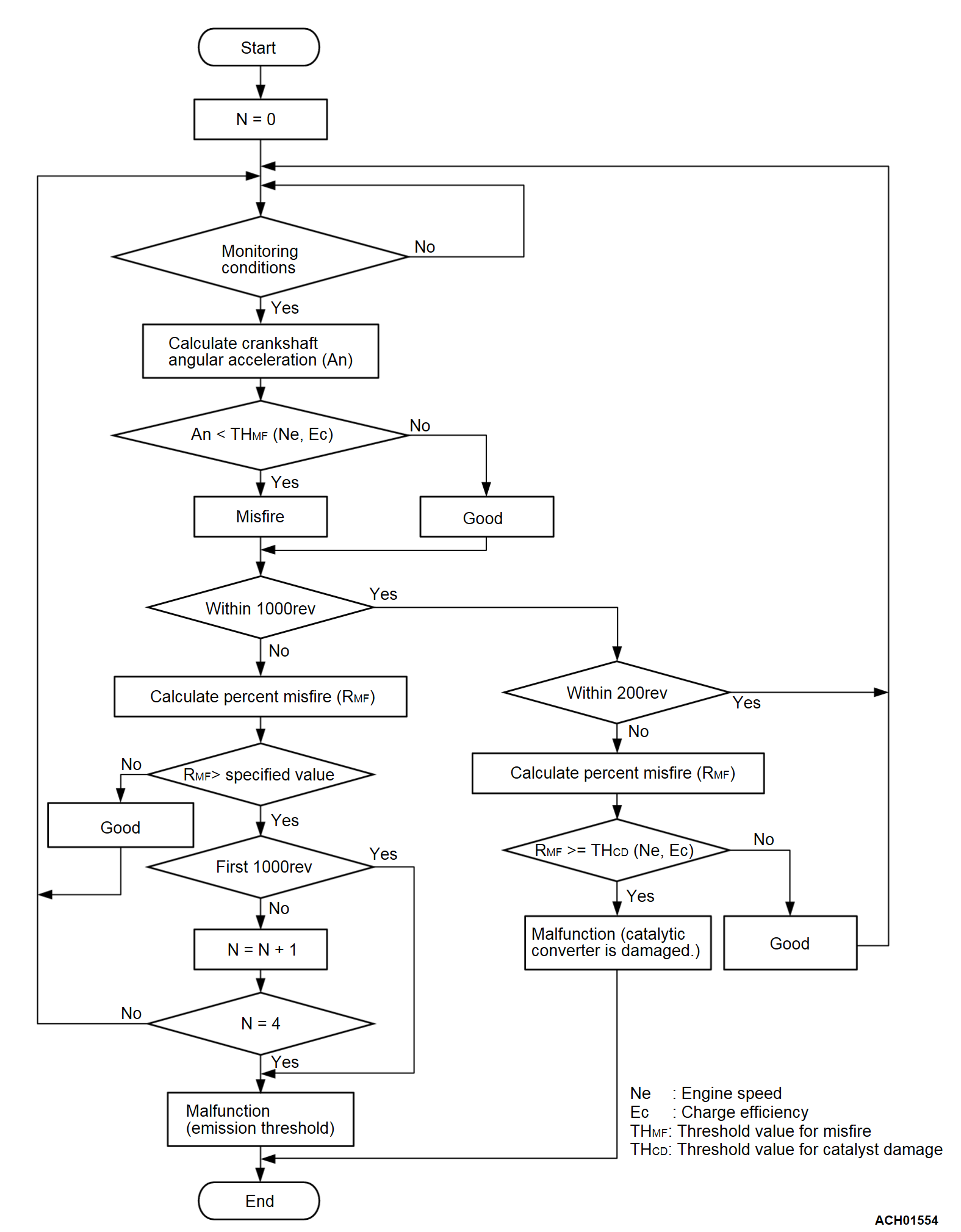DTC P0301: Cylinder 1 Misfire Detected
TECHNICAL DESCRIPTION
- If a misfire occurs while the engine is running, the engine speed changes for an instant.
- The ECM checks for such changes in engine speed.
DESCRIPTIONS OF MONITOR METHODS
Monitor angular acceleration of crankshaft and detect malfunction when negative variation of the angular acceleration is large.
MONITOR EXECUTION
- Continuous
MONITOR EXECUTION CONDITIONS (Other monitor and Sensor)
Other Monitor (There is no temporary DTC set in memory for the item monitored below)
- Not applicable
Sensor (The sensor below is determined to be normal)
- Camshaft position sensor
- Mass airflow sensor
- Engine coolant temperature sensor
- Intake air temperature sensor
- Barometric pressure sensor
- Throttle position sensor
Check Conditions
- Engine speed is between 438 and 6,656 r/min.
- Engine coolant temperature is more than -10°C (14°F). (However, 20°C (68°F) when the engine coolant temperature at engine start is -10°C (14°F) or less).
- Barometric pressure is higher than 76 kPa (22.4 in.Hg).
- The engine load is with in the positive torque load.
- Adaptive learning is complete for the vane which generates a crankshaft position signal.
- While the engine is running, excluding sudden acceleration/deceleration and fuel shut-off operation.
Judgment Criterion (change in the angular acceleration of the crankshaft is used for misfire detection).
- Misfire has occurred more frequently than allowed during the last 200 revolutions [when the catalyst temperature is higher than 1,000°C (1,832°F)].
or
- Misfire has occurred in 1.7 percent or more in the first 1,000 revolutions from engine start-up (corresponding to 1.5 times the limit of emission standard).
or
- After the first 1,000 revolutions, the following criterion is satisfied 4 times cumulatively.
- Misfire counts per 1,000 revolutions exceeds in 1.7 percent.
FAIL-SAFE AND BACKUP FUNCTION
- The supply of fuel to the misfiring cylinder can possibly be cut.
TROUBLESHOOTING HINTS (The most likely causes for this code to be set are:)
- Spark plug failed.
- Ignition system related part(s) failed.
- Low compression pressure.
- ECM failed.
DIAGNOSIS
STEP 1. Check the No. 1 cylinder ignition coil spark.
(1) Remove the intake manifold.
(2) Remove the No. 1 cylinder ignition coil.
(3) Remove the spark plug and connect to the No. 1 cylinder ignition coil.
(4) Ground the spark plug side electrode securely.
- When the engine is cranked, the spark plug should spark.
Did it spark?
STEP 2. Check the No. 1 cylinder spark plugs.
Refer to GROUP 16, Ignition System - On-vehicle Service - Spark Plug Check And Cleaning  .
.
 .
.Is the spark plug normal?
STEP 3. Check the compression.
![[Previous]](../../../buttons/fprev.png)
![[Next]](../../../buttons/fnext.png)


